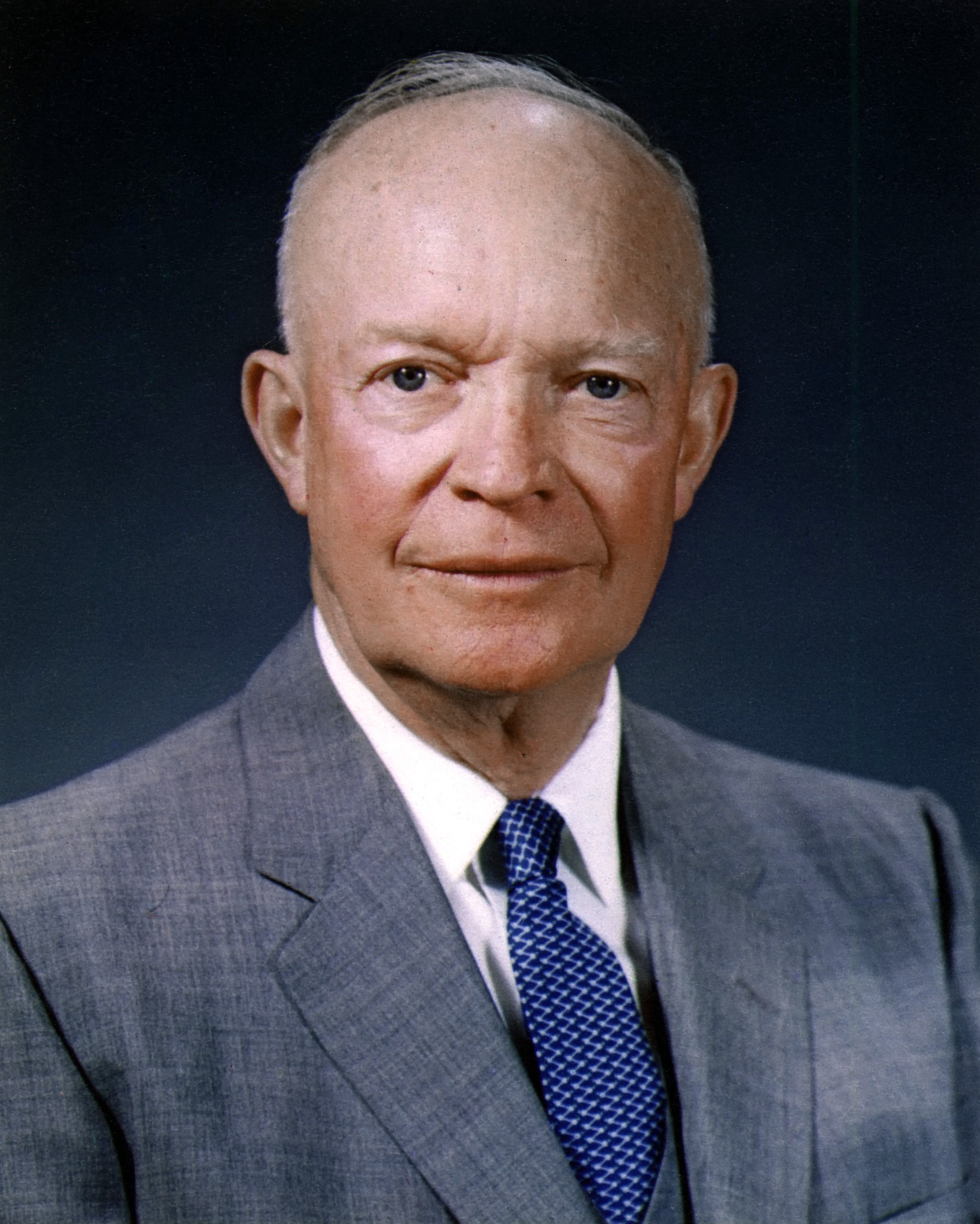More languages
More actions
Dwight D. Eisenhower | |
|---|---|
 | |
| Born | David Dwight Eisenhower October 14, 1890 Denison, Texas, US |
| Died | March 28, 1969 (aged 78) Washington, D.C., US |
| Nationality | Statesian |
| Political party | Republican |
Dwight David Eisenhower (October 14, 1890 – March 28, 1969), nicknamed Ike, was the 34th president of the United States of America from 1953 to 1961. Prior to the presidency, he had been supreme commander of the Allied forces in western Europe during the Second World War.[1]
The Vice President under Eisenhower was future President Richard Nixon. Allen Dulles was the CIA Director during Eisenhower's administration. Meanwhile, John Foster Dulles, brother of Allen Dulles, was the U.S. Secretary of State during this time.[2]
Eisenhower Doctrine
Eisenhower announced the "Eisenhower Doctrine" in January 1957, and Congress approved it in March of the same year. The Eisenhower Doctrine was aimed at preventing Soviet influence in the Middle East and stifling Arab nationalism, while making sure that the region would be under U.S. influence as European influence began to weaken there. The Doctrine, formulated by Secretary of State John Foster Dulles, came as a direct result of the Suez Crisis of 1956, sparked when Egyptian President Gamal Abdel Nasser announced the nationalization of the Suez Canal Company, the joint British-French enterprise which had owned and operated the Suez Canal since its construction in 1869. Although Nasser offered full economic compensation for the Company, the British and French Governments were outraged by the nationalization. U.S. worries about the continued viability of Western political and military power in the Middle East in the aftermath of the Suez Crisis prompted the creation of the Eisenhower Doctrine.[3][4]
Under the Eisenhower Doctrine, a country could request American economic assistance and/or aid from U.S. military forces if it was being threatened by armed aggression from another state. Eisenhower singled out the Soviet Union in his doctrine by authorizing the commitment of U.S. forces "to secure and protect the territorial integrity and political independence of such nations, requesting such aid against overt armed aggression from any nation controlled by international communism." The Doctrine also aimed to contain Arab nationalism, with Eisenhower believing that, as a result of the Suez conflict, a power vacuum had formed in the Middle East due to the loss of prestige of Great Britain and France. Eisenhower feared that this had allowed pan-Arab policies to spread and for Nasser to form alliances with Jordan and Syria. Eisenhower wanted this supposed power vacuum to be filled by the United States.[3][5]
Cuba
In 1958, President Eisenhower ordered an arms embargo on Cuba to prevent the overthrow of the Fulgencio Batista regime by Fidel Castro's 26th of July Movement and allies.[6] However, by January 1959, Batista was overthrown. The consensus in Washington, D.C. was that the revolutionary changes taking place in Cuba could not be allowed to continue, and in March 1960, President Eisenhower directed the Central Intelligence Agency (CIA) to develop a plan for the invasion of Cuba and overthrow of Castro, which eventually lead to the failed Bay of Pigs invasion in 1961. Although the invasion took place in the first months of the John F. Kennedy administration, it had been conceived and planned during Eisenhower's administration.[7] In addition, the United States embargo against Cuba was intensified at this time, now directed at toppling the Castro administration, with an aim to "bring about hunger, desperation and overthrow of government" in Cuba, as stated in a 1960 memorandum written by the then U.S. Deputy Assistant Secretary of State for Inter-American Affairs.[8]
References
- ↑ “Dwight D. Eisenhower.” In Encyclopædia Britannica.
- ↑ “Dwight D. Eisenhower - Administration.” Miller Center. December 16, 2016.
- ↑ 3.0 3.1 “50 Years since Eisenhower Doctrine.” RT International. March 9, 2007. Archived 2022-09-26.
- ↑ “Milestones: 1953–1960 - Office of the Historian.” State.gov. Archived 2023-03-14.
- ↑ “Milestones: 1953–1960 - Office of the Historian.” State.gov. Archived 2023-03-22.
- ↑ Bowdish, Jean. “The Venceremos Brigade: 50 Years of Solidarity with Cuba.” Workers World. November 2019. Archive link.
- ↑ Ruiz, Carmelo. “Bay of Pigs, the CIA’s Biggest Fiasco, 55 Years Later.” Telesurenglish.net. teleSUR. 2015. Archive link.
- ↑ "Memorandum From the Deputy Assistant Secretary of State for Inter-American Affairs (Mallory) to the Assistant Secretary of State for Inter-American Affairs (Rubottom)." Foreign Relations of the United States, 1958–1960, Cuba, Volume vi - Office of the Historian. State.gov. U.S. Department of State. Archived 2022-08-14.
